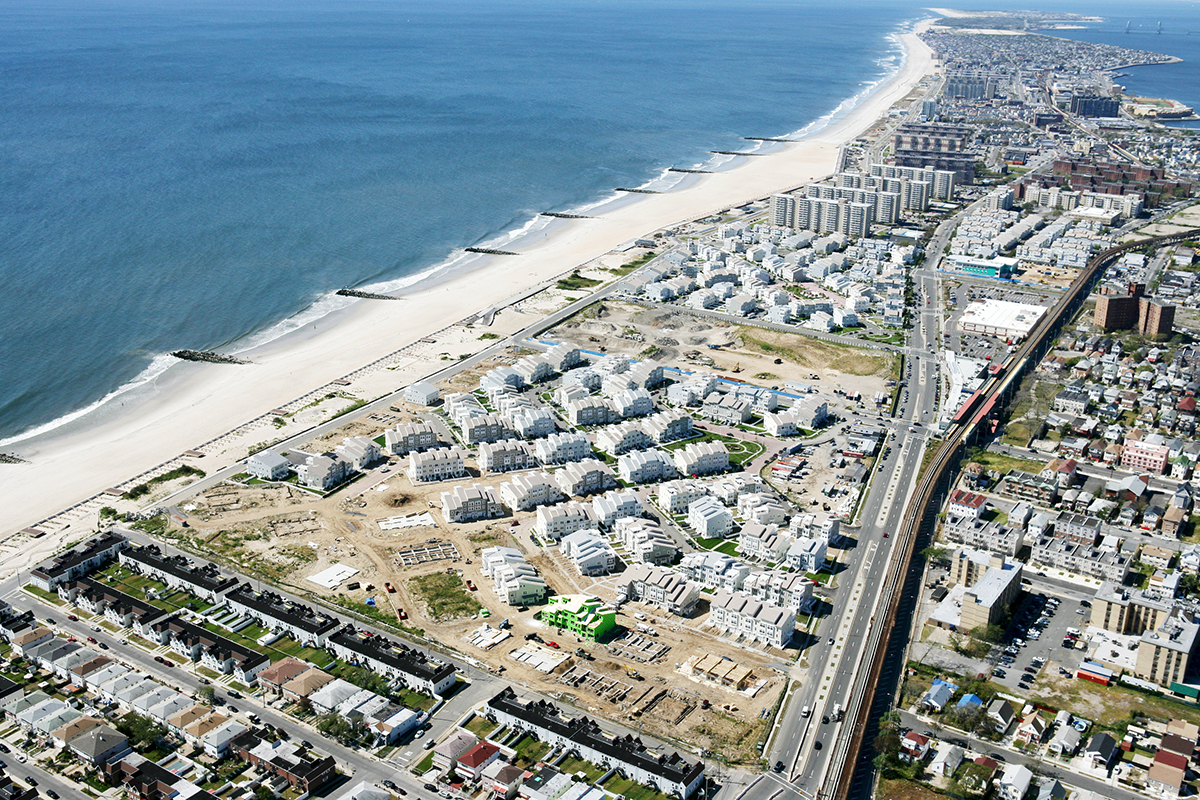
Eric Fang, Class of 2016 Fellow, helped design Arverne by the Sea, the largest urban waterfront renewal site in the United States.
“In the New York Rockaways, an 11-mile-long (18 km) peninsula south of John F. Kennedy International Airport, a fragile beachfront environment, low-lying elevations, and the absence of drainage infrastructure created the setting for some of the worst damage inflicted by Sandy in New York City. The storm washed away significant sections of the peninsula’s boardwalk; undermined 400 feet (122 m) of track, halting subway service to the area for months; closed several schools; and caused a fire that destroyed hundreds of homes. One area that survived relatively intact was Arverne by the Sea, a 120-acre (49 ha) mixed-use public/private redevelopment. Arverne by the Sea integrated a robust combination of protective dunes, extensive new subsurface drainage and storage infrastructure, and new fill that elevated large parts of the site above the floodplain into a larger design strategy oriented around transit to create a community that is resilient on multiple levels. Arverne by the Sea demonstrated that resilient development along the water’s edge can be done in a way that enhances rather than detracts from its surroundings and increases rather than cuts off access to the water. Because the area had been neglected for decades, large-scale redevelopment was the linchpin in attracting badly needed private investment there. The resulting investment in roadway and drainage infrastructure had benefits for the resilience of the wider community and economic development of the wider area.”
Read more: Arverne-By-The-Sea, Perkins Eastman
Further reading:
Lessons from Coastal New York, UrbanLand
ULI Case Study: Arverne by the Sea, UrbanLand
Arverne By The Sea, Urban Land Institute
Arverne By The Sea: Retail Transit Plaza, Perkins Eastman